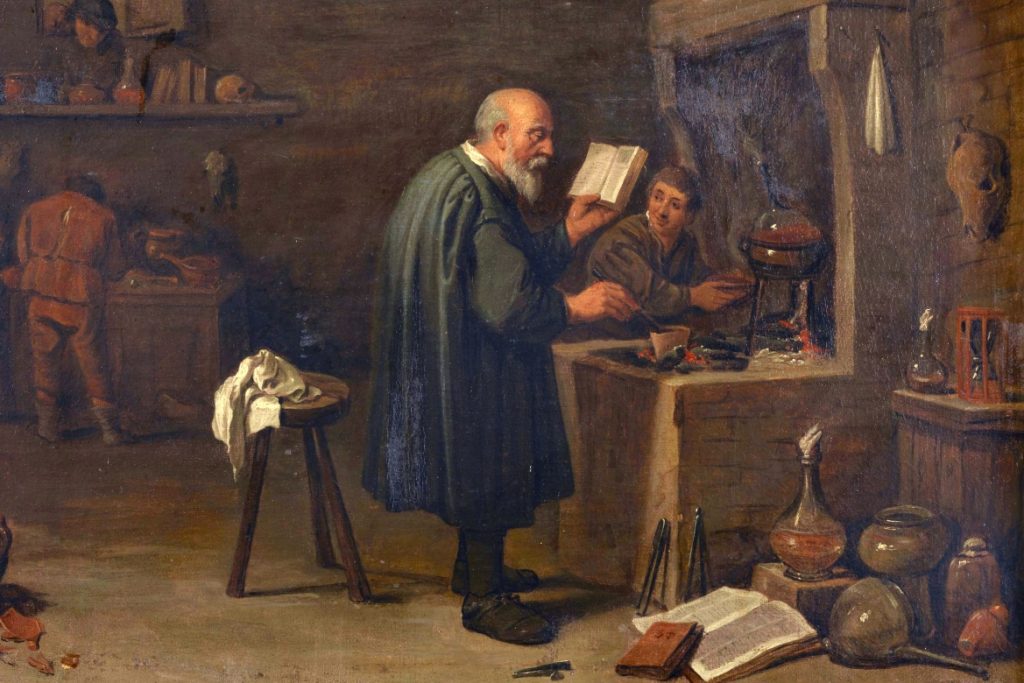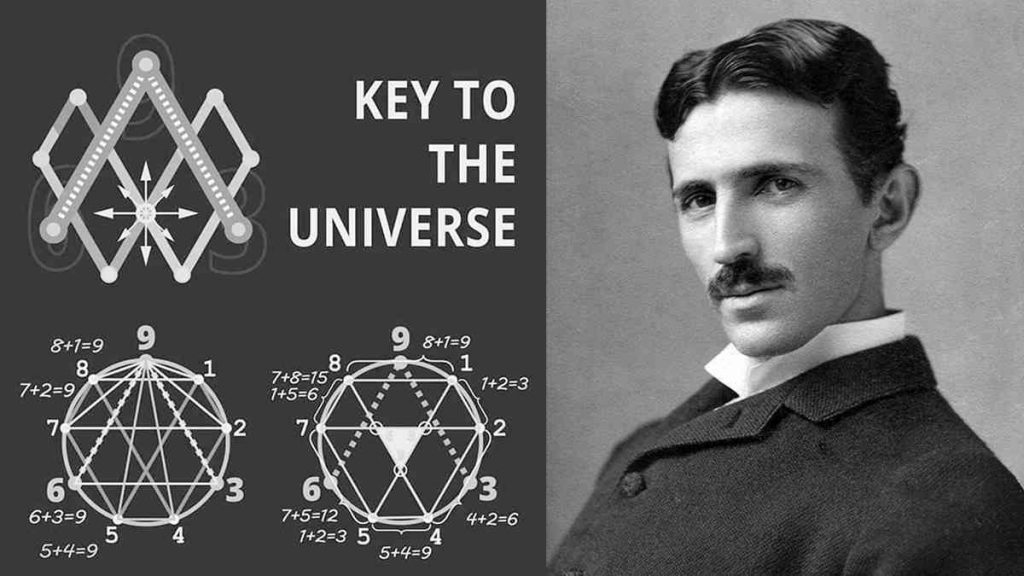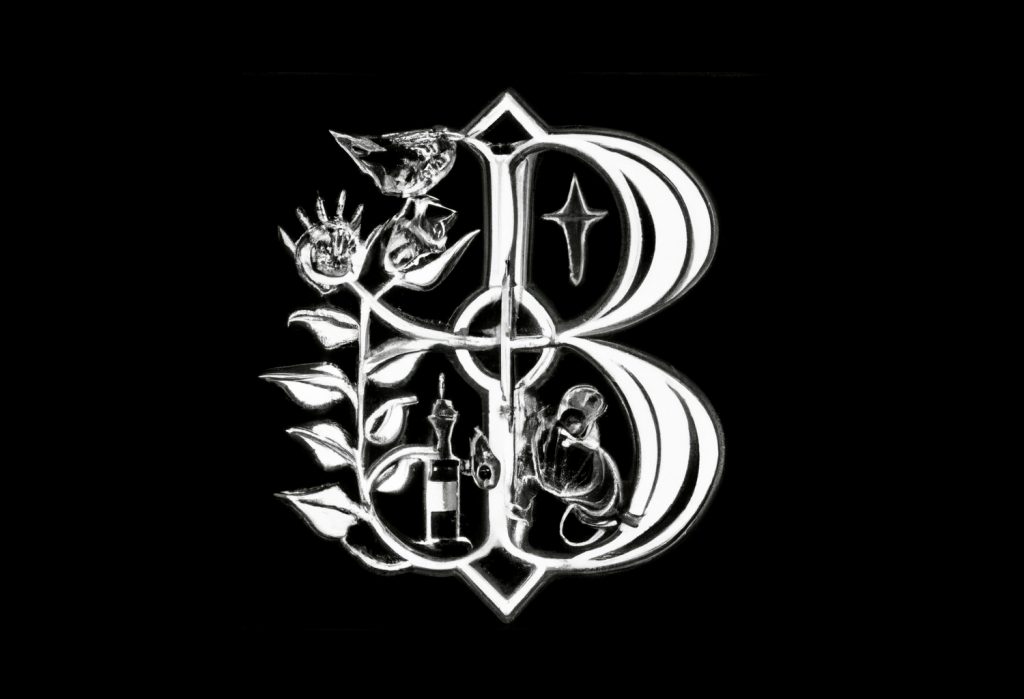“Any sufficiently advanced technology is indistinguishable from magic”.
Arthur C. Clarke
Bitcoin is mystical. It transforms energy into money, creates its own time calculation, encrypts and decrypts information, and contains symbolism in many places. Some of this is reminiscent of the obscure secret doctrine of alchemy, which has been practiced for several thousand years in various places around the world. But didn’t alchemists fail to make gold? Here comes an extensive walk into two very different yet slightly related “rabbit holes.”
To impress Bitcoin novices, it is often enough to demonstrate how to create a wallet using two dice. Even if one cognitively understands that there are 2¹⁶⁰ possible addresses and rolling two identical numbers is practically impossible, the idea of a mechanically-mathematically generated wallet seems absurd. This is because Bitcoin thereby leaves the controlled space of the Internet and suddenly becomes pure mathematics and, indirectly, a natural phenomenon. Bitcoin suddenly appears outside all companies, institutions and media – and simply exists. It is typical of Bitcoin because it’s a transformative technology. Transformation is an essential aspect. Think of mining, when sunlight, hydropower or torch gas powers electricity and then mutates into magical Internet money.

These processes draw people in and make the system seem bigger, more comprehensive and holistic than other internet technologies we use. It is no coincidence that only Bitcoin lends itself to so many metaphors or analogies from the natural environment. Bitcoin is time, fire, oil, a swarm of cyber hornets or mycelium – other areas where some kind of transformation plays the central role. Bitcoiners, in turn, transfer these properties to other areas and are fascinated by transformations of various kinds, whether in art, in nature, or in their own lifestyles. Yes, Bitcoiners love transformation. Is it perhaps because they mimick Bitcoin itself?
“Bitcoin is the digital transformation of warfare from a kinetic competition to an electric competition.”
Jason Lowery, Softwar (2023)
A thought experiment: What would have happened if someone had presented magic internet money 500 or even 1000 years ago? How would contemporaries have received an invisible money that transfers values across great distances in the shortest possible time or secures assets on the basis of keywords strung together, thus reducing property to knowledge? What would people have thought about the Lightning network with multiple subcontracts within individual payments? Not even mentioning Ordinals Inscriptions.
Presumably, people would have thought it all magic and prosecuted the Bitcoiners responsible for the spook and megalomaniacal goals. The church would have waged a relentless battle against the digital coin and banned the opaque secret doctrine behind it. Much the same happened to the teaching of alchemy, which remained so obscure for several thousand years that only a small circle of scholars descended into the depths of the mysterious rabbit hole.

Among the clichés that have persisted on the subject of alchemy is the attempt to make gold from ordinary metals. Even if alchemists did indeed engage in this, this portrayal is extremely truncated. But for years it has been a popular metaphor for journalists in the classical media. After all, it makes sense on the surface: alchemists failed to produce the precious metal, so what could be more obvious than a comparison with the digital underground movement of the 21st century, which dares to create value with a bit of mathematics and cryptology and pretends to change our society in the process?
But there is more to both: Bitcoin is much more than digital gold. And alchemy was at all times more than a dysfunctional chemistry set that failed at the crucial experiment. To understand what the two have in common, you have to look a little closer.
The doctrine of transmutation
So what was this obscure secret doctrine of alchemy that spread to different places in the world over 2000 years ago and still has a magical appeal today? It was an attempt to understand the universe, simultaneously, on material, mystical and philosophical levels. It was a kind of natural philosophy that dealt with transformation – or “transmutation.” This included the transition from one material to another. So also from ordinary metal to gold. But it also dealt with the transition of immaterial, spiritual states.
The exploration of the universe also included experiments in the laboratory. And even if many aspects and processes of alchemy cannot be understood to this day because the protagonists encoded their work, countless achievements were made in these laboratories, for example in the fields of today’s pharmacy, chemistry, metallurgy or astronomy. Today’s science would be unthinkable without alchemy.

Sulfur, gunpowder and mercury
The achievements of alchemy include, for example, black powder, which was discovered in Europe by an alchemist named Berthold Schwarz, but also the understanding and handling of sulfur, mercury or processes such as oxidation or alkaline reactions. Alchemists were concerned with all these processes because they wanted to understand the underlying “programming” of the world, so to speak. But to reduce alchemy to the laboratory is short-sighted. After all, transformations have always been about the symbolic or metaphorical level as well. Separating the levels from each other is like detaching a technical sub-area such as “blockchain” from a holistic monetary system like Bitcoin with its economic and philosophical foundation. And who would do such a thing?
In Bitcoin, too, several levels merge and are mutually dependent. These include the dimensions of economics or philosophy, but also components of technology. You can’t have one without the other: no fixed-limit money supply without decentralization. No freedom from censorship without globally distributed nodes. No secure transactions without mining, and no fixed monetary policy without energy. But in fact, part of the disease of our time is to want to isolate holistic processes. That is why, for example, Bitcoin is still seen as a precursor to later developments in the field of money – Blockchain not Bitcoin, in other words. And in the case of alchemy: “Chemistry not Alchemy”.
Alchemy as protoscience
The opinion that alchemy is a protoscience has persisted to this day. It is assumed that it was only a preliminary stage of today’s science, because although it led to some findings, it was not yet pursued stringently and scientifically enough. And was later replaced for this reason. Above all, it was the Enlightenment with its reduction to reason that replaced alchemy with chemistry in the course of time. And indeed, all experiences have been incorporated there: from achievements, discoveries, laboratory processes to terms. And interestingly, the metaphorical and mystical part of alchemy still exerts its attraction today – more on that later.
Many great thinkers have descended into this deep rabbit hole, and some have lost themselves in it. Some spent decades to understand coded writings or learned writing systems like Kabbalah to communicate with each other. Among them were notable figures such as Isaac Newton, perhaps the greatest physicist of all time, who found the fundamental laws of mechanics, discovered gravity as a universal force, and explained the color decomposition of light. He produced tens of thousands of pages on alchemy in the last half of his life, to the suspicion of many contemporaries, and is said to have devoted a total of more than 10% of his work to alchemy.
Isaac Newton and Alchemy
A metallurgy nerd, Newton could recognize a whole 108 metals by taste, some of which may have ruined his health. After expounding the laws of physics in his Metaphysics, he had become so enamored with the subject of alchemy that his descendants were embarrassed. After all, Newton should be remembered by posterity as a great physicist. Newton had probably found more to alchemy than the production of gold. Producing the valuable raw material in mass production was not his interest. The great physicist and economist appreciated the scarcity of gold too much. After all, the great physicist was also Warden of the Mint, who supervised the issuance of the British pound in England between 1699 and 1727 and focused on the physical properties of the material. He simply did not set limits to the disciplines, but was driven by an interest in knowledge.
Symbols of Alchemy: Newton Sans Font
Newton also made extensive use of symbols and used them in his manuscripts. It was not until 2009/2010 that the “Chymystry of Isaac Newton Project” published a Unicode Standard font set. The Newton Sans Font includes countless symbols that were used in the 16th and 17th centuries. And many more that Newton used in his records.
Even more obscure than Newton’s symbols was the work of the great Arab alchemist Jabir ibn Hayyan, who is said to have written over 300 books on philosophy, 1300 on mechanical inventions, and several hundred on alchemy. A large part of his books is based on the philosophy of the “Science of the Balance”, which tried to reduce all phenomena including material substances to quantitative ratios. Because his work was so difficult to understand and had so many symbols, the name Jabir became the root of the English “gibberish.”

Encoding of information
Overall, alchemy has a lot to do with encoding and decoding information. An alchemical work should serve two functions: On the one hand, to ensure that knowledge is passed on from one generation to the next in order to safeguard the knowledge for the future. On the other hand, however, protect the knowledge so that no one from the outside can read it or misuse the knowledge. The sometimes extreme coding of the books was thus intended to preserve tradition. It was not a matter of preventing disclosure, but of erecting a barrier to access. Knowledge was therefore sensitive information that had to be encoded.
There are also many extreme examples of encryption in alchemy. One was the work of the mathematician, astronomer, astrologer and alchemist John Dee, who was also an advisor to Queen Elizabeth I in the 16th century. He encoded his alchemical knowledge in extensive diagrams and symbols that have occupied alchemists and readers for centuries. To this day, scientists can only speculate about the meaning.
Sometimes it was also not clear on which level the information took place. For example, in the 17th century, a text entitled “Mutus Liber” appeared that contained many illustrations showing how to turn lead into gold, accompanied by Latin verses. But the twist was that both text and images were not meant to be literal. They had to be interpreted first to show the true content.
Bitcoin as a metaphor
Bitcoin is a cryptographic system and a transaction fulfills two opposing functions in parallel. For example, every transaction should protect privacy and be secure, but it should also be publicly traceable. Access is granted by a private key. Whoever knows it becomes the owner. And even though Bitcoin does not provide a coin with pictures, the hexadecimal characters that make the system possible form an indirect metaphor for values, just as Rai stones, shells or gold have done within the associated monetary systems. Or in the extreme case fiat money, which has nothing more to offer than the pure metaphor.
#Bitcoin is a swarm of cyber hornets serving the goddess of wisdom, feeding on the fire of truth, exponentially growing ever smarter, faster, and stronger behind a wall of encrypted energy. pic.twitter.com/6krl2ldyWd
— Michael Saylor⚡️ (@saylor) January 7, 2021
Money always needs a common belief construct. The subtle difference is only that a commodity like gold set the economic rules about physical properties. How much new gold came to market each year governed how difficult it was to mine. Bitcoin solves the stock-to-flow balance via math. And in the process, economic, psychological or philosophical considerations merge inextricably with the technology.
Metaphors, in turn, often work a bit differently than usual with Bitcoin. Because Bitcoin, as money, does not provide images, but as an entire system invites analogies. There is always an abstract source of the metaphor – the Bitcoin system – and a concrete goal. Thus Bitcoin has the civilization-bringing power of fire, is a super-commodity like oil, indestructible and decentralized like mycelium, reliable like gravitation, and is at the same time a means of communication like language, an economic primal meter, or even the city of Venice.
Carl Gustav Jung: From alchemy to the subconscious mind
The metaphorical level of alchemy has always exerted a strong attraction. And sometimes the subject became interesting only at second glance. Psychoanalyst Carl Gustav Jung is perhaps the most impressive example. Like Michael Saylor, who initially put Bitcoin in the same drawer as “online gambling,” the founder of analytical psychology dismissed alchemy as “utter nonsense” for a long time, until it struck him while reading a book that everything could be understood metaphorically. He immediately dived down the rabbit hole and published several books on the subject, even making it an important part of his psychological theory. He was particularly concerned with the symbolism of processes and images and believed that dreams could be interpreted with the help of alchemical symbols.
Alchemy was for him a key to the subconscious. He then collected alchemical texts and spent more than two decades researching. But it wasn’t just the symbols that appealed to him. He also applied the seven-step process that alchemists used in the lab to the human psyche – heating, dissolving, separating, combining, fermenting, distilling and coagulating.
Many Bitcoiners do much the same as Carl Gustav Jung and transfer processes from the Bitcoin system to their lives. Proof-of-work, the energy expenditure that brings Bitcoin into being and ensures security, becomes a principle of life. Lifting weights, playing sports, or putting effort into a work of art are the results. Many Bitcoiners describe their insight process as an “orange pill” that transformed their lives.
The universe as a miniature experiment
Carl Gustav Jung described this level of alchemy as a kind of “drama” whose performance reflected virtually the entire universe: “Alchemy is a kind of drama, acted out on the stage of the laboratory, in which the whole universe, in miniature, is recapitulated.” Consequently, in every action in the laboratory, there was a philosophical and mystical level in addition to the material one.
Too abstract? Let’s take a concrete example: the element mercury, which represents both a metal and a planet, but also had other levels of meaning. The material mercury was used in many alchemical experiments and was considered unique because it could dissolve gold. The planet Mercury, in turn, had a direct influence on the Earth for the alchemists. At the same time, it was also considered a symbol of the inner self. Thus, the production of mercury was also a spiritual enlightenment with planetary consequences.

Symbolism in Bitcoin
As we saw with Newton, alchemy produced a plethora of symbols describing elements or planets. In addition, alchemy was also heavily influenced by numbers, each of which brought special meanings. For example, alchemists were interested in the numbers 3, 6 and 9. In alchemical numerology, the number 3 signifies the trinity of body, mind and spirit. The number 6 represents balance and harmony, and 9 represents completion and the attainment of knowledge. In addition, 6 also represented the six planets known at that time.
3, 6 & 9 as the key to the universe
The inventor Nikola Tesla was also obsessed with 3, 6, 9. For him, it was the basis on which the entire universe was built. Thus, an atom has three particles – protons, neutrons and electrons. And all important numbers of the universe have a digital root of 3, 6 or 9. So a circle has 360 degrees (3 + 6 + 0 = 9), half is 180 degrees (1 + 8 + 0 = 9), a day has 24 hours (2 + 4 = 6) and so on. For Tesla it was the key to the universe.

And interestingly enough, these very same numbers can be found in Bitcoin. For example, the digital root of the 21 million coins is the number 3: there are 33 halvings (3 + 3 = 6) and the Difficulty Adjustment takes place every 2016 blocks (2 + 0 + 1 + 6 = 9). And the digital root always adds up to exactly 3, 6, or 9 in many other places in Bitcoin as well: such as the first block after each halving, the number of coins in each halving, the number of coins per day, and the number of coins left to mine after each halving.

The number 21 also had meaning in alchemy, as the sum of the three stages of transmutation: nigredo (blackening), albedo (brightening), and rubedo (reddening). Each stage was represented by the number 7, and the combination of these three numbers (7 + 7 + 7) gave 21 – thus 21 was the completion of the process.
Hexahedron and Ventiuno
Bitcoin is usually presented only as a technical-mathematical solution, but nevertheless many numbers used can also be interpreted as symbolic. The central number 21, which limits the absolute number of coins, is often seen as arbitrary. But is it really? We get the number, for example, by adding the numbers 1,2,3,4,5 and 6. Thus, even an ordinary hexahedron cube has exactly 21 eyes. In general, the number is an elementary component of many games.
For example, the card game called “Ventiuno”, which is also described by the author Miguel de Cervantes (Don Quixote), first appeared in Spain in 1611. The goal: to reach 21 with the cards – but in no case more. But 21 goes far beyond the game. The number also has a meaning in the Bible and is repeatedly associated with new beginnings. 21 is the end of one cycle and the beginning of a new one. It is sin and rebellion. There are 21 chapters in the book of Judges.
In the Tarot, 21 is closely related to 8 and 13: 13 is death and 8 is justice and strength. 21 is the world – the complete end of a life cycle. Too arbitrary? No, neither 8 nor 13 nor 21 are ordinary numbers, but come from the Fibonacci sequence, which in turn also finds expression in nature.
Symbolism of the Bitcoin logo
But symbolism doesn’t stop with Satoshi’s invention. The logo designed in 2010 also has many layers of meaning. For example, the logo primarily makes use of the magic number 8, which is the numerical representation of the letter “B” according to the Internet language 1337. Thus, the angle of inclination of the B is exactly 13.88 degrees. The dimensions of other shapes were always 12.5 (1/8 of 100), respectively. But the designer didn’t just make up the number 13.88 but instead it’s the result of adding infinite B’s by dividing the previous value by 10 – 12.5 + 1.25 + 0.125 etc. This results in 13888.
The Bitcoin logo is also a circle, which reminds us of a coin but is also an endless line – infinity. If you place two circles next to each other, they result in the infinite sign – or again a sideways tilted 8.
In closing, it must be noted that Bitcoin and alchemy are, of course, two almost opposite things. Bitcoin is a precisely defined system that performs a specific task. Alchemy, on the other hand, was a barely transparent world of symbols and processes seemingly applied to everything. But people often underestimate how much Bitcoin inspires philosophy and mysticism. Much like alchemy, at its heart is transformation. The monetary system feeds directly from nature, so to speak, by transforming energy into money. Interestingly, there is no other cryptocurrency that is used as a basis for metaphors and analogies. It lacks the alchemical transmutation that sets Bitcoin apart from them.


